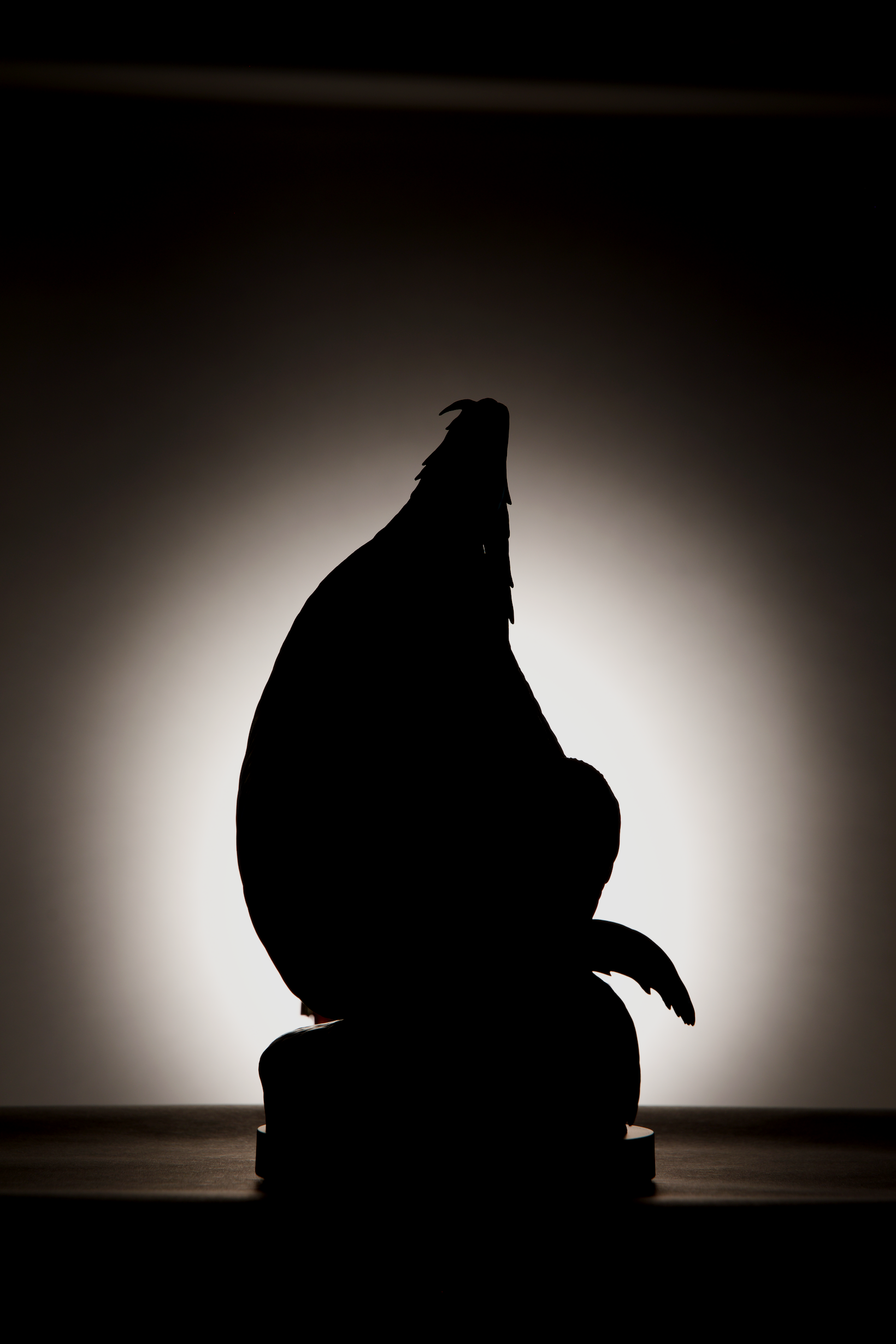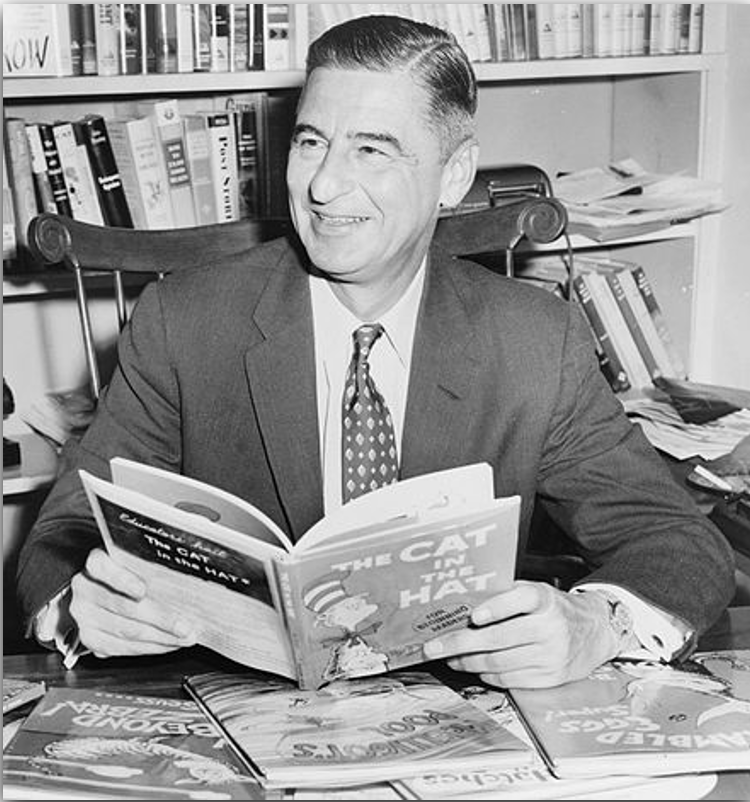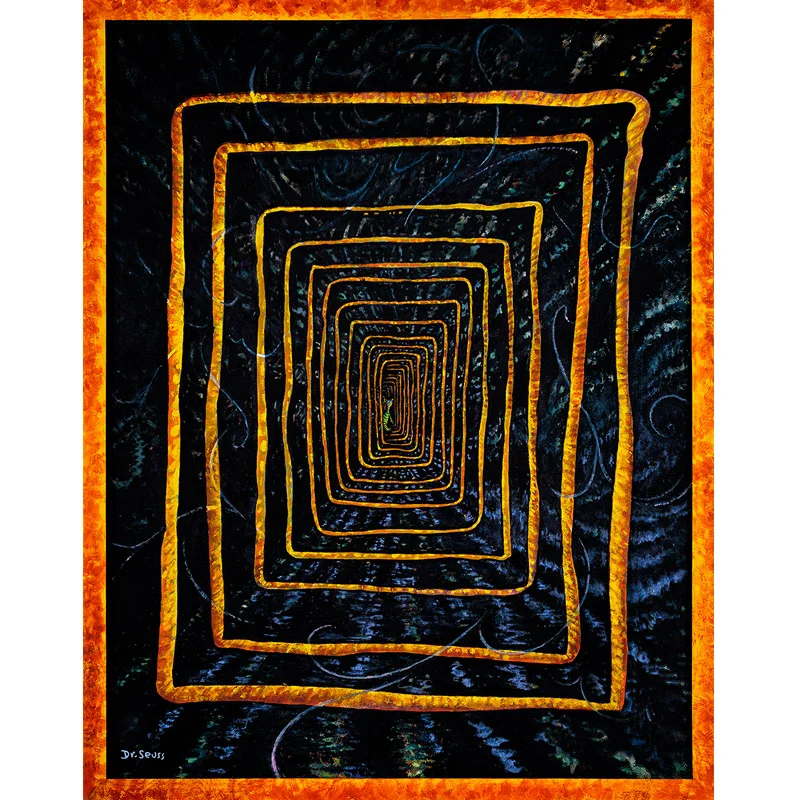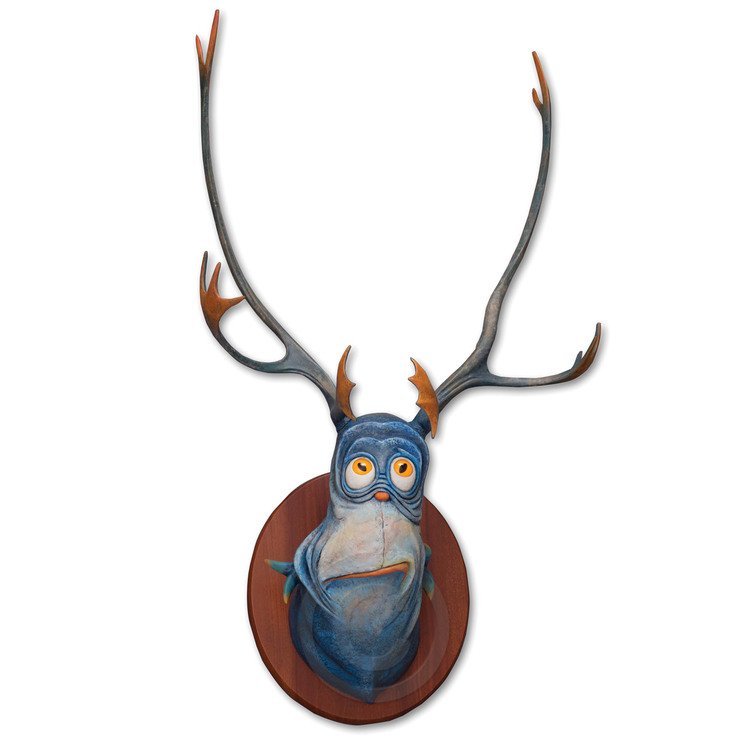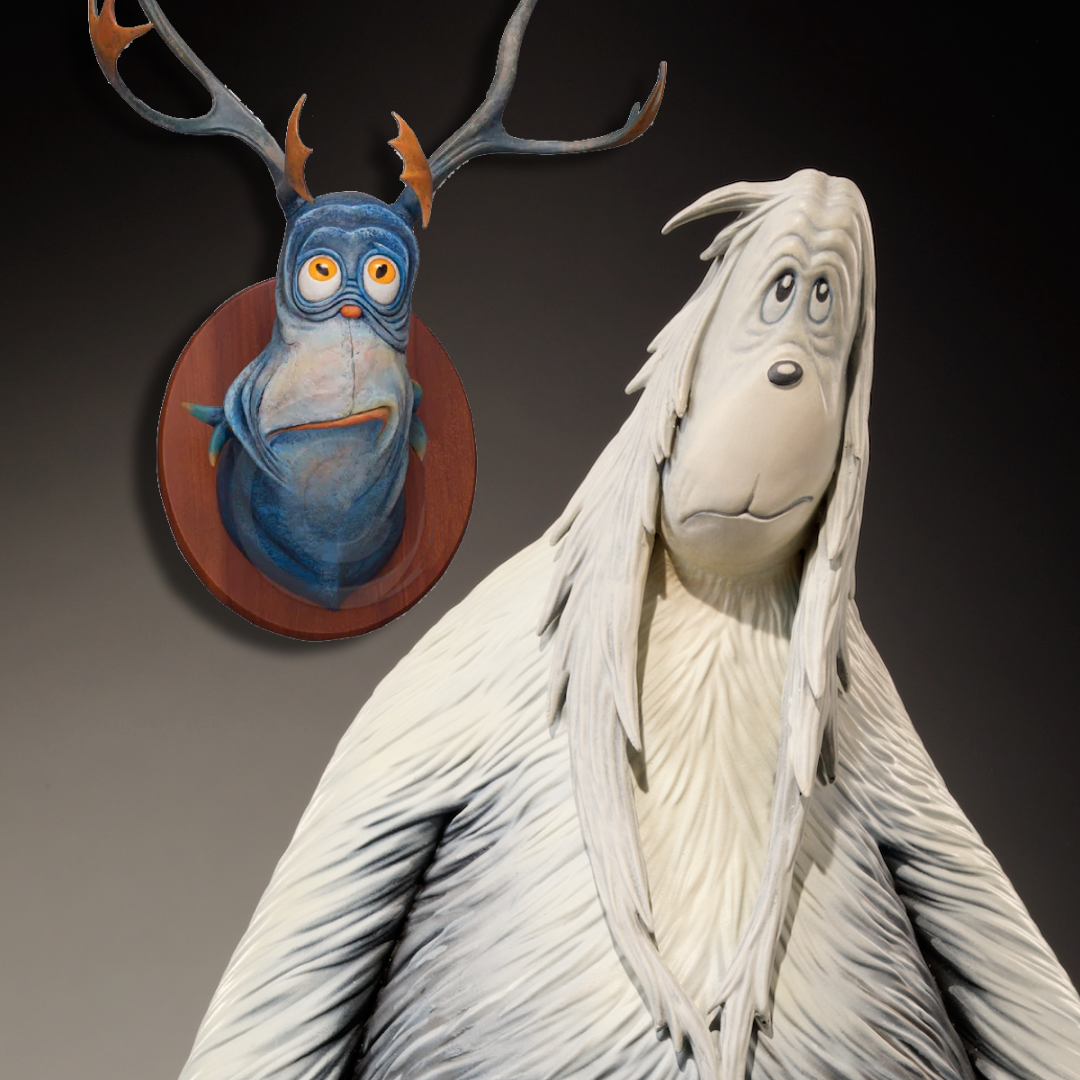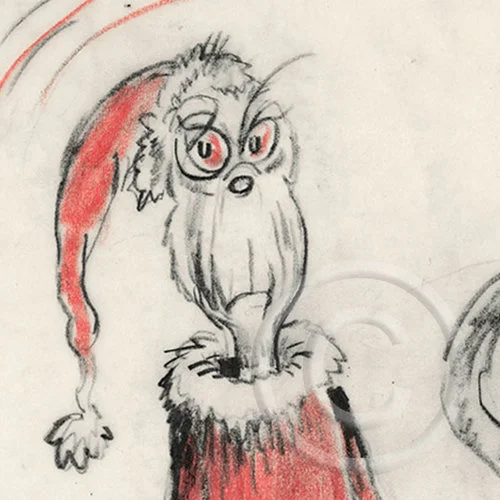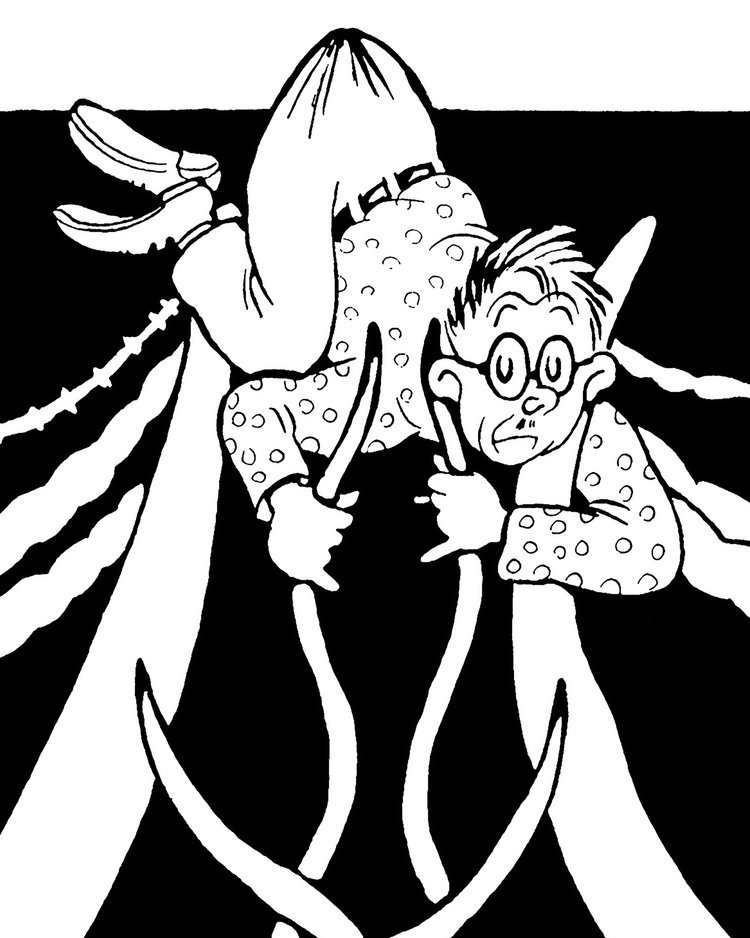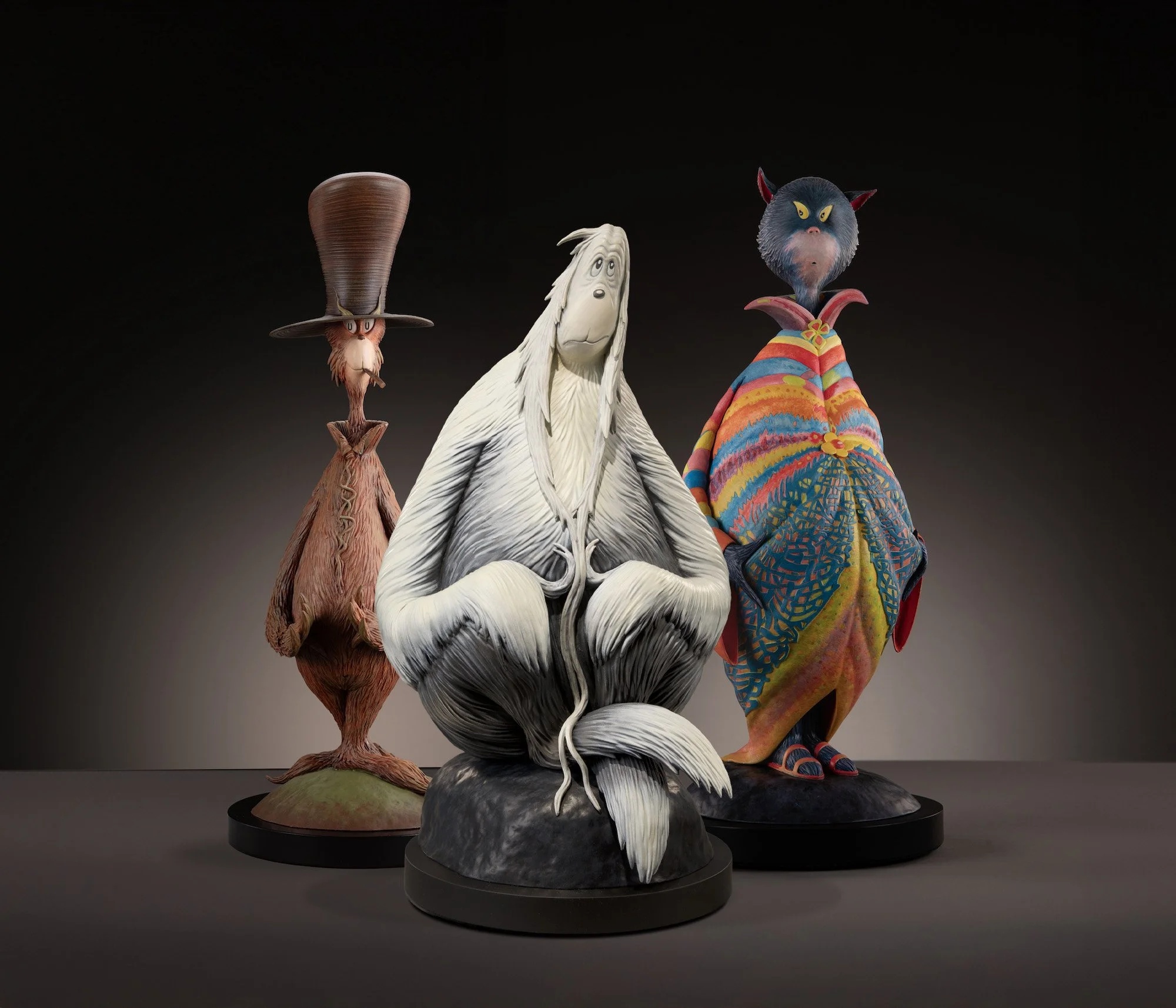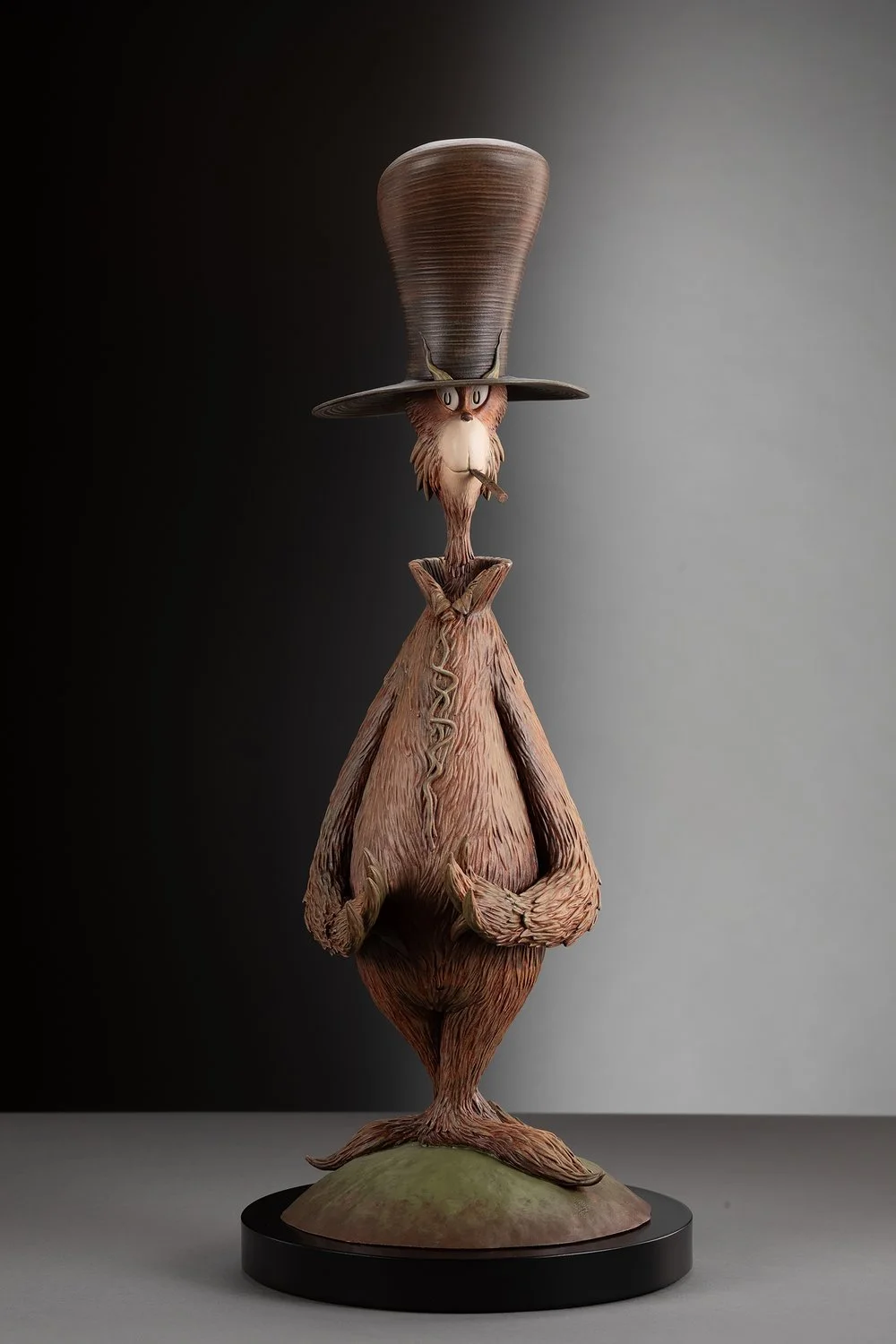the moment after triumph
“What on earth do I do next? Will I ever have another good idea?”
At the end of the 1950s, Ted Geisel (aka Dr. Seuss) had scaled the cultural summit. The Cat in the Hat and How the Grinch Stole Christmas! had vaulted him from beloved author to pop-culture icon, a household name whose creations redefined children’s literature. And yet, precisely there, on the peak, he confronted the quiet cliff of uncertainty that stalks many of us in our moments of accomplishment: “What on earth do I do next? Will I ever have another good idea?”
Artist Worrying captures that precipice. It is the intimate admission behind the public legend, a moment of imposter syndrome rendered with candor and wit. The work invites us into the thin air of creativity, where nothing is guaranteed and the next step must be invented, not inherited.
Take a closer look
watch the video below
In the Thin Air of Uncertainty
Opportunity Takes Shape


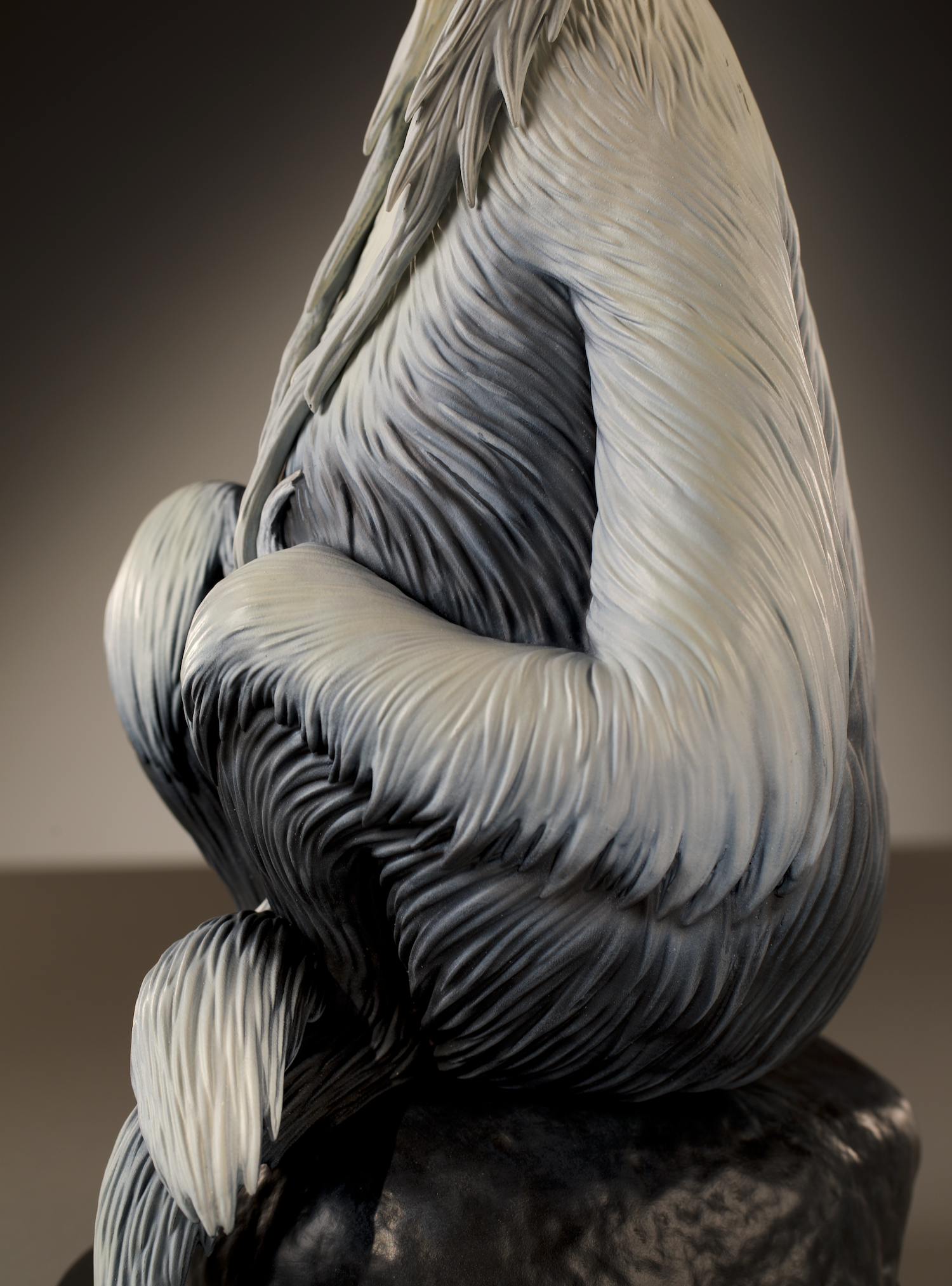
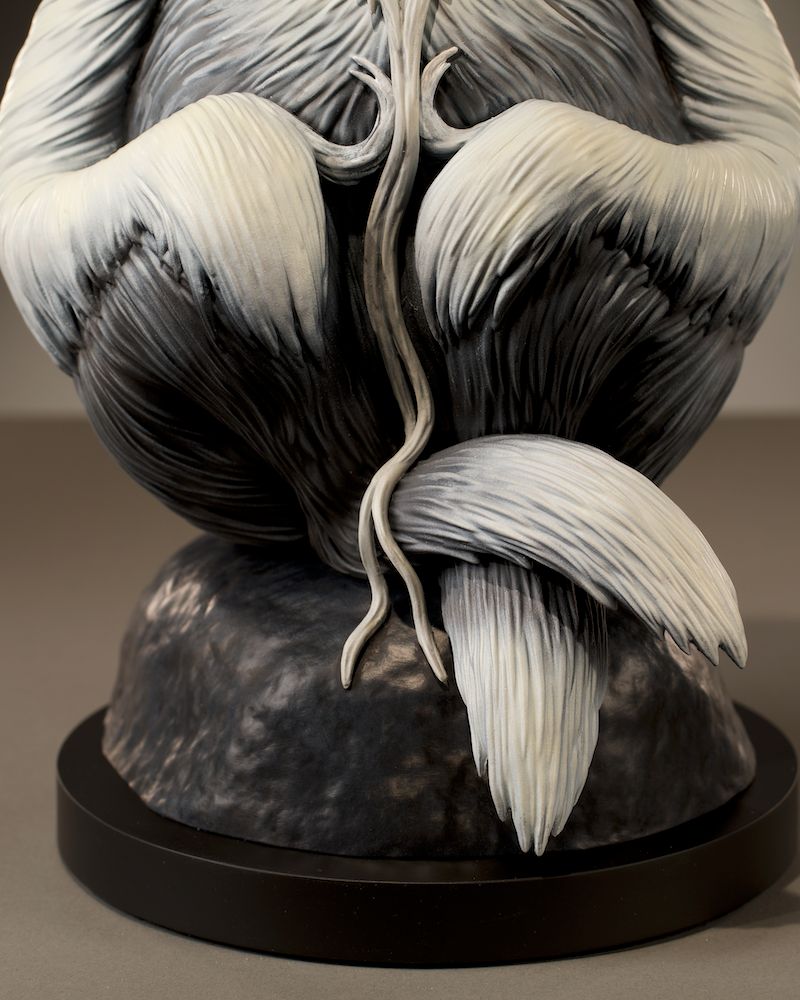

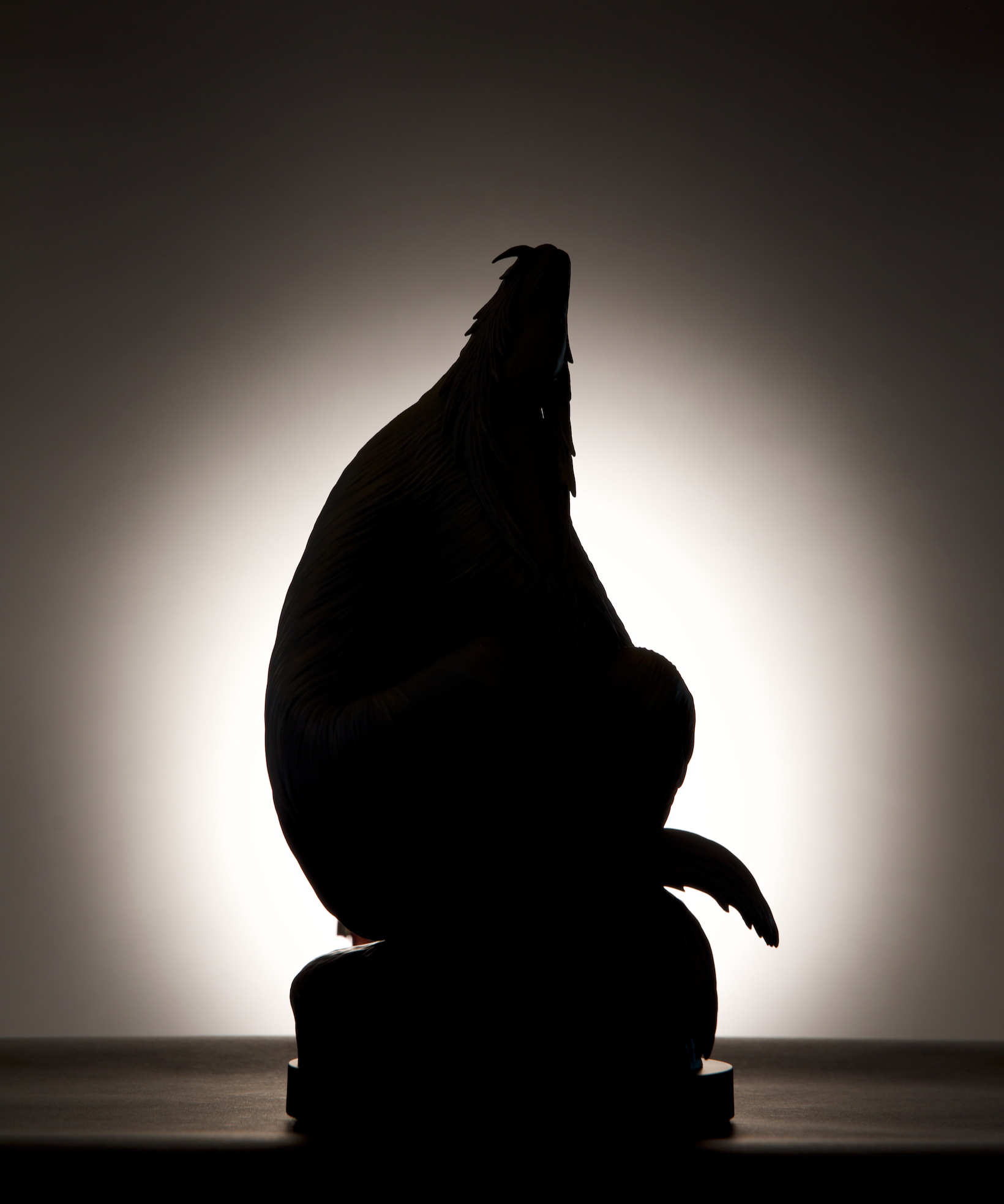
$4,995
Hand-Painted Cast Resin Sculpture
Authorized Estate Edition
Dimensions: 13”h x 7.5”w x 7”d with a .75”h x 6.75” base
Limited Edition of 850 Arabic Numbers
99 Patrons’ Collection
155 Collaborators’ Proofs
5 Hors d’Commerce
This tribute was modeled after Dr. Seuss’s original painting, Self-Portrait of the Artist Worrying About His Next Book.
Artworks from the Secret Art Sculpture Collection are carefully packed in custom designed boxes fit to the exact specifications of each sculpture in the collection.
Secure your acquisition now!
Please contact your local gallery for how to acquire and to learn more.
The Quiet Cliff of Uncertainty
“Ted commented that he worried people would “take one look and recognize me as a fraud.””
After having ascended to international fame following the release of The Cat in the Hat and How The Grinch Stole Christmas, Ted commented that he worried people would “take one look and recognize me as a fraud.” That confession can be seen as defeatist, or as empowerment – depending upon how we choose to use it. Ted used it to fuel a series of private works that helped him find his way, including rare paintings such as Green Cat in Uleåborg Finland Subway and Fooling Nobody.
Green Cat in Uleåborg Finland Subway
Fooling Nobody
The now coveted painting, Self Portrait of the Artist Worrying About His Next Book, was a defining moment in that string of remarkably vulnerable paintings, each showing an artist working to reclaim his agency and turn anxiety into action.
This dynamic new sculpture challenges us all in such moments, helping us move from “Now what?” to what is next. After we hit our goals – whether it be family, professional or otherwise - do we freeze, or do we move? Ted models an emotionally intelligent path forward, acknowledge the fear and then transforming it into action.
Self-Portrait of an Artist Worrying About His Next Book
Mining Our Roots
to Overcome Fear
“What followed ‘Self Portrait of The Artist Worrying About His Next Book’ is the twist that makes this image legendary.”
Ted Geisel’s next project was Green Eggs and Ham, a masterwork of determination and open-mindedness that became one of the best-selling titles in the English language upon release.
Green Eggs and Ham 60th Anniversary
The book, a self-portrait of sorts, draws upon Ted’s own story of determination and open-mindedness when he attempted to publish his first book nearly 20 years earlier. 28 publishers rejected him before the 29th was openminded enough to take a chance.
It’s as if Ted needed to re-write that story (this time as Sam trying to peddle Green Eggs and Ham) to pick himself up and remind himself of his own determination all of those years earlier.
The Many Faces of A Seussian Dilemma
Look closely at the sculpture’s expression, the long, searching visage, the furred shoulders drawn up as if bracing for an answer that has not arrived. Ted used this very “dilemma face” decades earlier in his unorthodox taxidermy, most notably the Sea-Going Dilemma Fish, as it distilled the feeling of being caught between possibilities – the Dilemma Fish has both fins and horns, a dilemma incarnate. Here, in his self-portrait, he turns that vocabulary on himself with disarming honesty.
Sea-Going Dilemma Fish
It’s fitting that Ted used this idea throughout his career – the notion that dilemmas push us forward and open us up to opportunities we never dreamed possible.
The Grinch, just prior to his heart growing three sizes, displayed the same facial expression as seen here while pondering what the holidays were really about. Was he right, or were the Who’s? Should he continue on his quest to steal Christmas, or join the Who’s in celebration of what really matters most?
The face of The Grinch 60th Anniversary
From A Large Family of Dilemmas
The expression seems to have manifested itself early in Ted’s artistic output, as painted in the Large Family of Dilemmas. Here, the wayward student represents Ted in 1926 on the horns of a great dilemma – stay in school at Oxford College or drop-out and travel to Paris to experience the central axis of the artworld? Indeed, the stretched and sideways face proclaims a similar problem, and thankfully for all Dr. Seuss fans, Ted determined that Paris was the appropriate next step. Wild inspiration followed, and Ted the artist began to emerge.
Secret Art Sculpture Collection 1
Navigating Life
This groundbreaking collection began with the introduction of The Indistinct Cat sculpture, launched on the eve of the Art of Dr. Seuss Collection’s 25th Anniversary, then joined by the iconic Joseph Katz… and now completed with Artist Worrying.
Each work touches upon key aspects of navigating our lives…
Together for the first time, the premiere edition of The Secret Art Sculpture Collection offers a developing philosophy of navigation, identity, fellowship, and courage - pivotal moments in Ted’s artistic arc that are now crystallized for collectors in enduring form… with more chapters still to come. This set represents a $1,000 value compared to individual sculpture acquisition.
The Indistinct Cat
In the Indistinct Cat, we are confronted with our many facets and how each performs a certain function depending upon life’s circumstance. For Ted, Dr. Seuss was his outward persona, but here in the Indistinct Cat, we see a glimpse into his more private, indistinct self. We all present different parts of ourselves to the world, whether it be in our professional lives, with our family and friends, or alone in our own thoughts.
Joseph Katz
Joseph Katz highlights the profound importance of friendship to help us through life’s various stages. For Ted, Lee Katz was one of the most influential in his life, beginning in World War II in which they served together and continuing for decades to follow. Lee was the one that introduced and encouraged Ted to move to California, a move that would inspire some of Ted’s most famous drawings, paintings and books. We all have key friendships that have gotten us through life, and here Ted suggests we anoint these folks as our chosen one.
Artist Worrying
Modeled after Dr. Seuss’s original painting, Self-Portrait of the Artist Worrying About His Next Book, Artist Worrying is the third leg of this stool, that of facing fear and challenges with reality, humility, and a dose of grit and determination. We must acknowledge the moments when we are stuck, asses what we have accomplished, and then begin to tap into our own strength and knowledge to push ourselves forward.
The acclaimed artist Michael DeFeo was commissioned to realize all three works in three dimensions. DeFeo is most well-known for translating Horton and the Lorax into three-dimensional sculptures for the production of those two blockbuster films.
To learn more about the artist, CLICK HERE.
Related Works
SOLD OUT
The Sea-Going Dilemma Fish is one of the seven “Marine Muggs.” The January 1937 issue of Yachting magazine highlighted their appearance: “From the briny depths of the imagination of the famous designer, Dr. Seuss…
We all face large and small dilemmas nearly every day. Life’s beauty is in the collective outcomes of such precarious situations, with each experience bringing us closer to knowing who we are and what we hope to become. As such, encountering “a large family of dilemmas” throughout our years seems the best path to a life well lived.
RARE
The work of Dr. Seuss has the uncanny ability to cut through the myriad of outside media forces and draw us inward to what matters most, regardless of the decade we live in. The Grinch’s realization that the spirit of being human is not in what we have materially, but rather in what we hold dear in our hearts, has become a timeless lesson.
Adapted posthumously from the illustration on the last page of the 1960 book, Green Eggs and Ham, this iconic 60th Anniversary image seems to mark the culmination of Dr. Seuss’s determination, open-mindedness, and willingness to meet challenges head-on.
Please contact your local gallery for how to acquire and to learn more.

